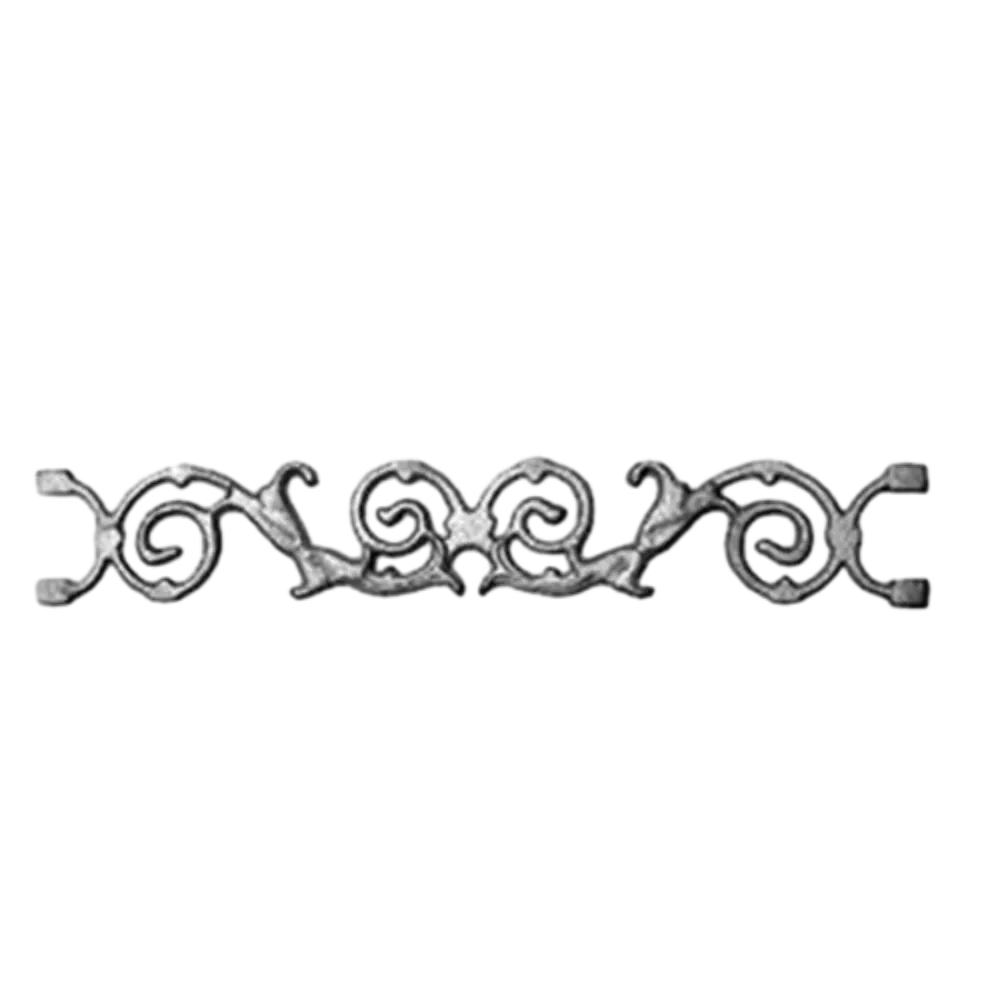Corrosion of Wrought Iron and Its Impact on Structural Integrity and Longevity
The Impacts of Rusting on Wrought Iron
Wrought iron, known for its malleability, ductility, and strength, has been a favored material in construction and manufacturing for centuries. However, one of the major challenges associated with wrought iron is its susceptibility to rusting. Rusting, a form of corrosion that occurs when iron reacts with oxygen and moisture, can significantly affect the integrity and aesthetic appeal of wrought iron structures and objects. Understanding the process of rusting and its effects can help in developing effective preservation methods.
The Rusting Process
Rusting is an electrochemical reaction that begins when oxygen in the presence of water comes into contact with iron. This reaction produces iron oxide, commonly known as rust. The fundamental equation can be simplified as follows
\[ 4Fe + 3O_2 + 6H_2O \rightarrow 4Fe(OH)_3 \]
This ferric hydroxide then dehydrates to form rust, which can vary in color from red-brown to yellowish-green, depending on the hydration state and the presence of other electrolytes.
Factors that accelerate the rusting process include acidity, salt exposure, and physical damage to protective coatings. For wrought iron, which is generally composed of around 99% iron with small amounts of slag, the structure can become compromised relatively quickly if preventative measures are not taken.
Effects of Rusting on Wrought Iron
The effects of rusting on wrought iron are manifold. First and foremost, rust can cause significant structural damage. The expansion of rust (iron oxide) occupies more volume than the original iron, leading to additional stress and cracking in the material. Over time, this can compromise the structural integrity of buildings, bridges, and other iron-based constructions.
rusting wrought iron

Additionally, rust detracts from the aesthetic value of wrought iron. Wrought iron has been historically prized for its beauty, often featured in decorative railings, gates, and furniture. Rust spots and flaky surfaces mar this appeal, undermining the craftsmanship and design. This is particularly true for wrought iron art installations, where the visual impact is paramount.
Preventive Measures
To combat the detrimental effects of rusting on wrought iron, several preventive measures can be employed. The most common methods include protective coatings, regular maintenance, and environmental controls.
1. Protective Coatings Applying a layer of paint, galvanization, or oil can create a barrier between the iron and moisture. Modern synthetic coatings have been developed that can withstand harsh weather conditions, further enhancing durability.
2. Regular Maintenance Routine inspections to identify early signs of rust can help to address issues before they escalate. Sanding down rust spots and reapplying protective coatings as part of a regular maintenance schedule is crucial to extend the life of wrought iron structures.
3. Environmental Controls It’s important to manage the environment in which wrought iron is situated. Reducing exposure to saltwater, for example, is especially critical in coastal areas where the natural elements can expedite the rusting process.
Conclusion
Rusting is an inevitable challenge for wrought iron, which, while celebrated for its strength and beauty, requires diligent care to maintain its integrity and appearance. By understanding the rusting process and implementing effective preventive measures, homeowners, engineers, and artisans can ensure that wrought iron continues to be a viable and attractive material for years to come. Ultimately, the effort put into the maintenance and preservation of wrought iron not only protects the material itself but also honors the rich tradition of wrought iron craftsmanship that has shaped our architectural heritage.
-
Wrought Iron Components: Timeless Elegance and Structural StrengthNewsJul.28,2025
-
Window Hardware Essentials: Rollers, Handles, and Locking SolutionsNewsJul.28,2025
-
Small Agricultural Processing Machines: Corn Threshers, Cassava Chippers, Grain Peelers & Chaff CuttersNewsJul.28,2025
-
Sliding Rollers: Smooth, Silent, and Built to LastNewsJul.28,2025
-
Cast Iron Stoves: Timeless Heating with Modern EfficiencyNewsJul.28,2025
-
Cast Iron Pipe and Fitting: Durable, Fire-Resistant Solutions for Plumbing and DrainageNewsJul.28,2025
-
 Wrought Iron Components: Timeless Elegance and Structural StrengthJul-28-2025Wrought Iron Components: Timeless Elegance and Structural Strength
Wrought Iron Components: Timeless Elegance and Structural StrengthJul-28-2025Wrought Iron Components: Timeless Elegance and Structural Strength -
 Window Hardware Essentials: Rollers, Handles, and Locking SolutionsJul-28-2025Window Hardware Essentials: Rollers, Handles, and Locking Solutions
Window Hardware Essentials: Rollers, Handles, and Locking SolutionsJul-28-2025Window Hardware Essentials: Rollers, Handles, and Locking Solutions -
 Small Agricultural Processing Machines: Corn Threshers, Cassava Chippers, Grain Peelers & Chaff CuttersJul-28-2025Small Agricultural Processing Machines: Corn Threshers, Cassava Chippers, Grain Peelers & Chaff Cutters
Small Agricultural Processing Machines: Corn Threshers, Cassava Chippers, Grain Peelers & Chaff CuttersJul-28-2025Small Agricultural Processing Machines: Corn Threshers, Cassava Chippers, Grain Peelers & Chaff Cutters












